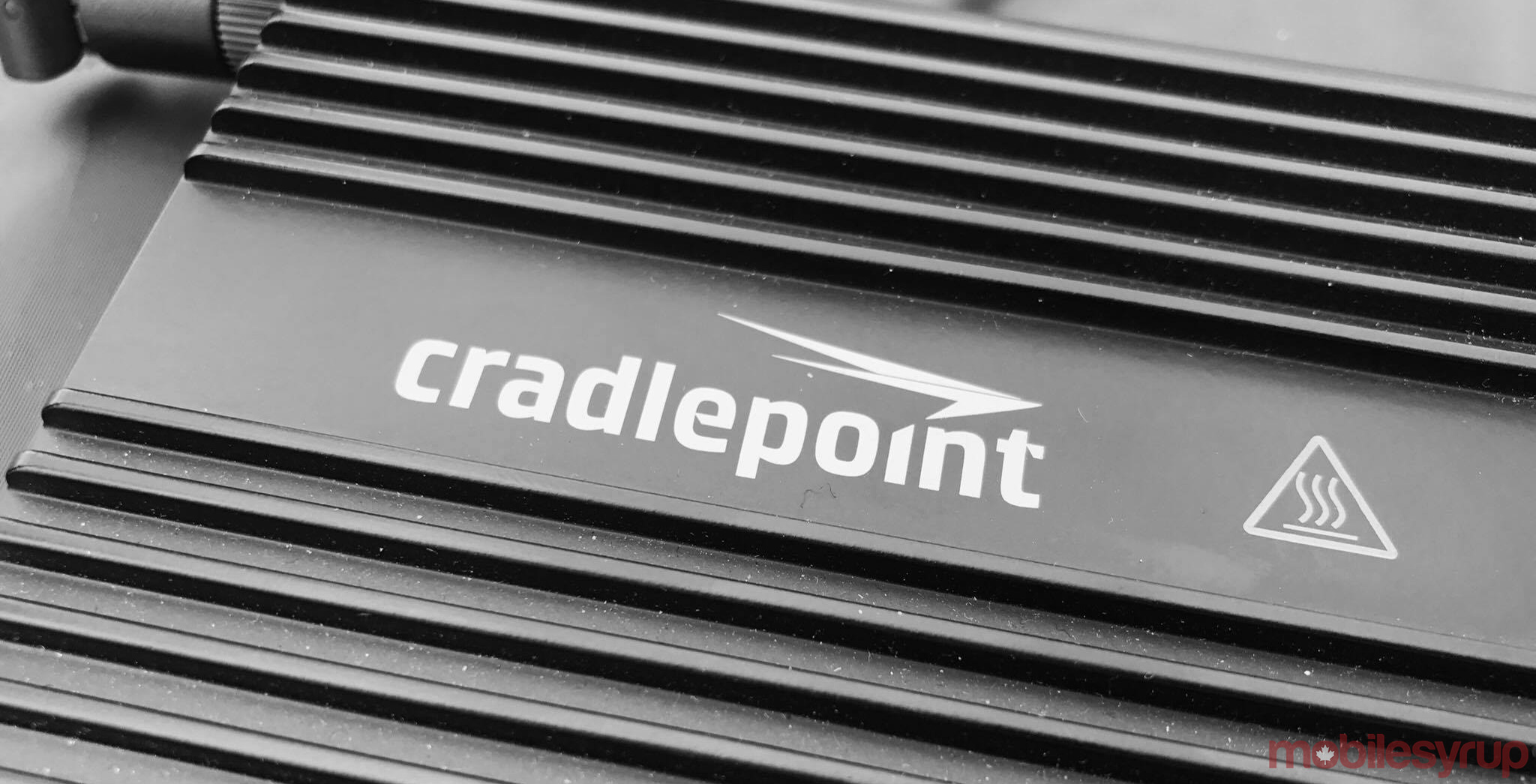
As a consumer, you may not have heard of Cradlepoint, but you’ve probably benefited from the services it provides.
Cradlepoint creates products that allow their customers — mainly corporations and small businesses — to build their own network, including routers that convert wireless broadband into Wi-Fi or ethernet.
For instance, Cradlepoint works alongside private network company Radiant to provide a secure, reliable wireless connection for Tim Hortons locations across Canada.
You may also know of Cradlepoint from its earlier, more consumer-focused phase. Eleven years ago it was one of the pioneers of mobile hotspots, gaining its name from its form factor; a cradle where you placed your phone to make it an access point.
Lindsay Notwell, vice-president of carrier and international business at Cradlepoint — and a 17-year Verizon veteran who was executive director of its LTE network rollout — recently spoke with MobileSyrup on the subject of 5G.
Notwell, who noted Cradlepoint was already working with early 5G developers to become the first to market in 5G routing, shared his opinion on several aspects of the new wireless generation. Below are his key observations.
5G will not fully replace 4G
Notwell predicts that 3G will be entirely gone by the early 2020s, with carriers refarming the 850MHz spectrum being used in their 3G network to make use of it with more modern network technologies — but he says the same won’t happen for 4G.
“5G will not replace 4G,” says Notwell, “4G is a great wide area network, but because 5G is going to be broader and wider [in order to support higher throughputs] it by nature has to be super short. Most [connections] are going to be measured by meters, not miles.”
Notwell says 5G will instead act more like an overlay of improved wireless service.
5G is going to once again favour the urban
To that point, Notwell notes that rural areas aren’t likely to see many of these expensive short-range deployments.
“It’s going to be more of an urban play than a rural play,” he says, noting that it doesn’t make much financial sense for carriers to deploy multiple 5G cell sites for an area that’s very sparsely populated.
Giving some hope to rural users, however, he states “you might see 5G tech used on a lower wave.”
5G goes far past gigabit speeds
Notwell states that consumers can expect to see gigabit LTE in one or two years, while 5G will offer several times faster service.
“You’ll see a massive change in that respect,” says Notwell, adding that one of the unsung heroes is latency, which refers to how fast data can be fetched from the server with which the user is connecting.
If that explanation is a little too jargon-heavy, latency is also often described using the metaphor of a water pipe. If bandwidth is the total amount of water that can flow through the pipe at any given time, latency is the amount of time it takes for the water that enters the pipe at one end to exit at the other.
“It changes a functional paradigm.”
Notwell says that as latency hits real-time levels, it will open the door to the future technology use cases that are expected to dominate the 5G era.
“[High-end] VR is wired not because of bandwidth requirements but because of latency, 5G will introduce the opportunity for wireless AR and VR.”
Notwell thinks AR and VR — commonly referred to together as mixed reality — will be a major technological advancement that will offer much more than entertainment value.
“It changes a functional paradigm,” says Notwell, “It’s all about — how do I take experts and place them safely into areas that are difficult or dangerous — think of a fire or a mine. You’re going to see whole new use cases.”
5G is not just faster, it’s slower
Notwell also pointed that 5G is “not just faster, it’s slower” — a confusing statement at first, but one that refers to the importance of IoT and machine-to-machine communications in the new network.
IoT and machine communications often won’t require the super low latencies or high speeds that are required by technologies like AR or autonomous driving, so they offer a perfect application for the super low bands that aren’t very fast, but demand long-range and power efficiency.
“600MHz spectrum has the ability to reach 40 or 50 miles,” says Notwell, adding that improved power efficiency allows users to equip these devices with 10-year batteries.
This technology could enable use cases that are perhaps less interesting to consumers than things like AR and self-driving cars, but will offer significant benefits for companies — for example, a metering company could avoid a truck roll in favour of an IoT device running on a low band.
Users will have a say in building 5G
Ultimately, Notwell says it will be a gradual path to 5G.
“The world is not going to change all at once,” says Notwell. “We’ll work closely with our customers, and listen to what they would want to use.”
For Cradlepoint and its corporate customers, security is an important factor — particularly because the push for lower latencies is driving more computing to edge of the network.
As for the broader consumer base, they’ll also get to weigh in.
“Consumers will participate by saying what rocks and what doesn’t.”
MobileSyrup may earn a commission from purchases made via our links, which helps fund the journalism we provide free on our website. These links do not influence our editorial content. Support us here.


